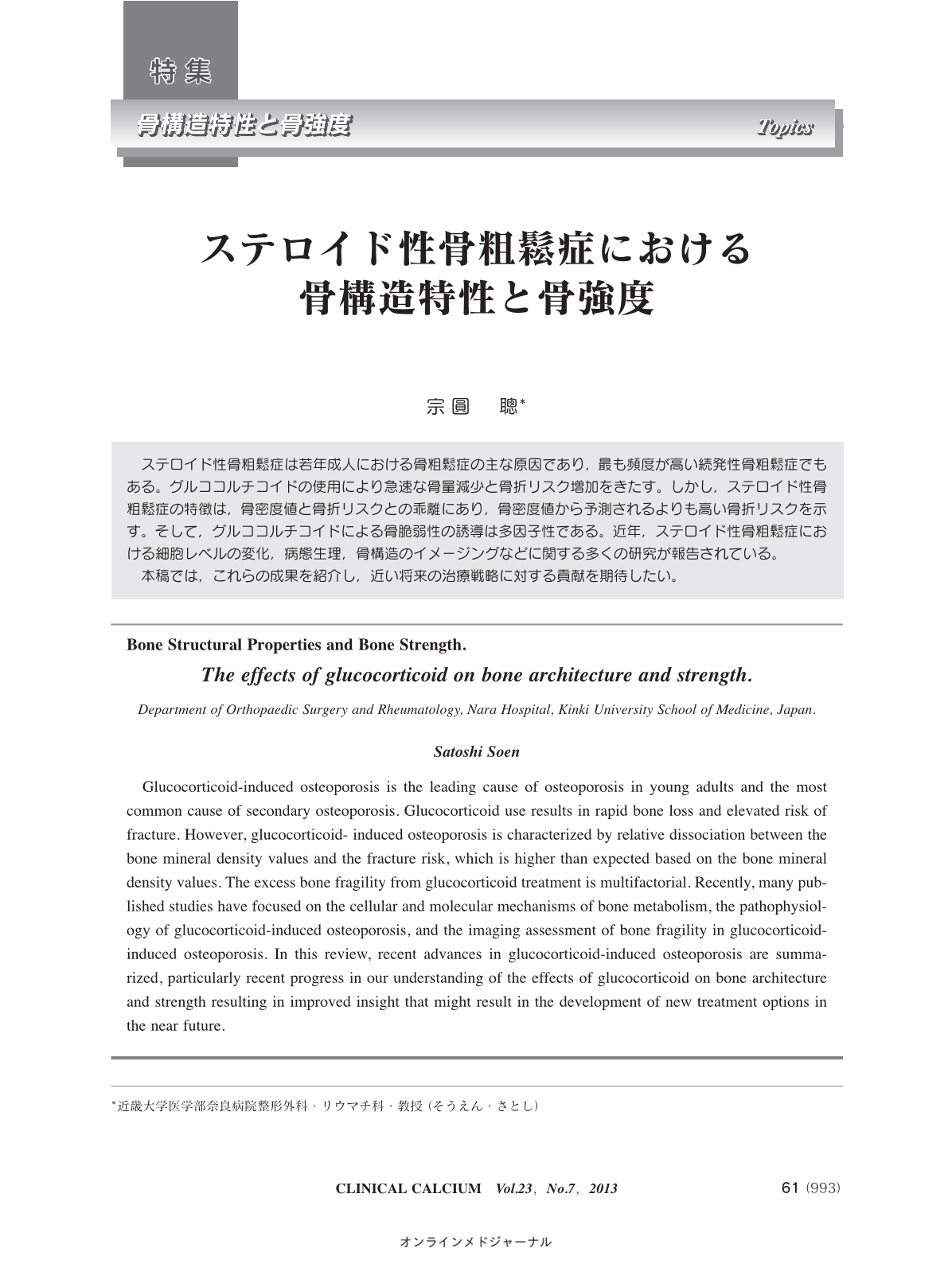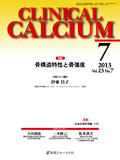Japanese
English
- 有料閲覧
- Abstract 文献概要
- 1ページ目 Look Inside
- 参考文献 Reference
ステロイド性骨粗鬆症は若年成人における骨粗鬆症の主な原因であり,最も頻度が高い続発性骨粗鬆症でもある。グルココルチコイドの使用により急速な骨量減少と骨折リスク増加をきたす。しかし,ステロイド性骨粗鬆症の特徴は,骨密度値と骨折リスクとの乖離にあり,骨密度値から予測されるよりも高い骨折リスクを示す。そして,グルココルチコイドによる骨脆弱性の誘導は多因子性である。近年,ステロイド性骨粗鬆症における細胞レベルの変化,病態生理,骨構造のイメージングなどに関する多くの研究が報告されている。 本稿では,これらの成果を紹介し,近い将来の治療戦略に対する貢献を期待したい。
Glucocorticoid-induced osteoporosis is the leading cause of osteoporosis in young adults and the most common cause of secondary osteoporosis. Glucocorticoid use results in rapid bone loss and elevated risk of fracture. However, glucocorticoid- induced osteoporosis is characterized by relative dissociation between the bone mineral density values and the fracture risk, which is higher than expected based on the bone mineral density values. The excess bone fragility from glucocorticoid treatment is multifactorial. Recently, many published studies have focused on the cellular and molecular mechanisms of bone metabolism, the pathophysiology of glucocorticoid-induced osteoporosis, and the imaging assessment of bone fragility in glucocorticoid-induced osteoporosis. In this review, recent advances in glucocorticoid-induced osteoporosis are summarized, particularly recent progress in our understanding of the effects of glucocorticoid on bone architecture and strength resulting in improved insight that might result in the development of new treatment options in the near future.



